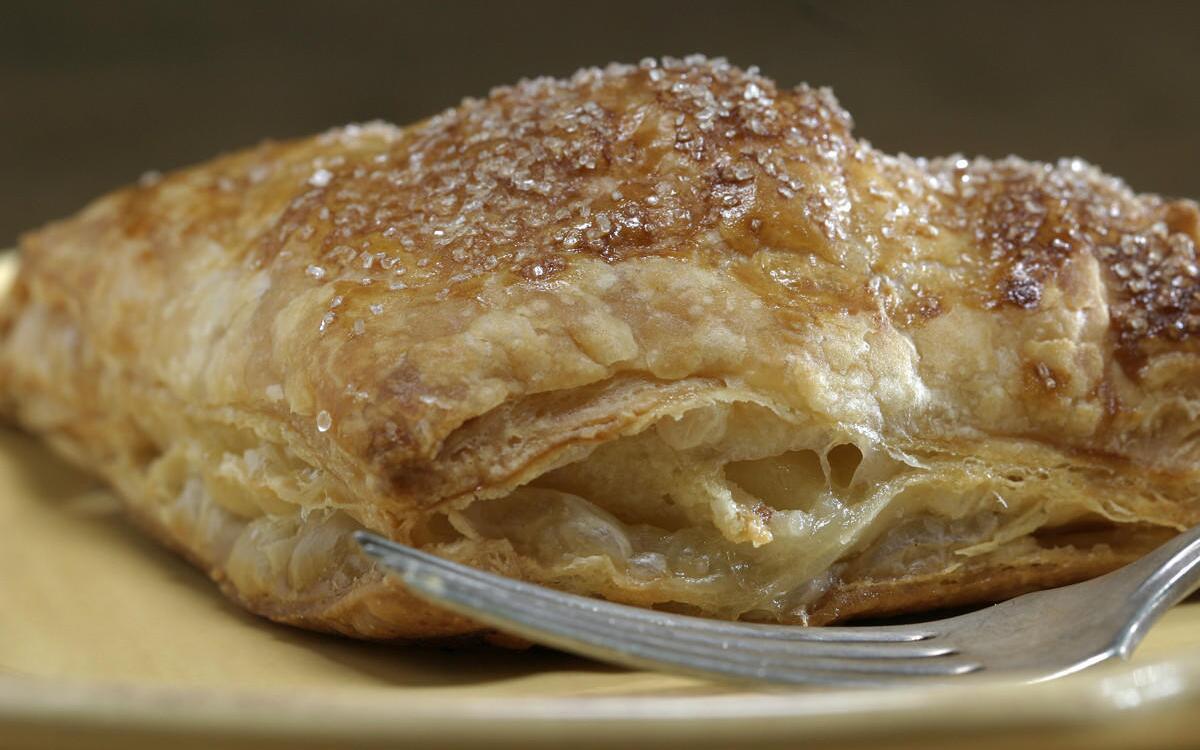Pear frangipane turnovers

PERFECTLY ripe, the pear is a paradox: verging on crisp, yet soft as velvet. With every juicy bite, its delicate flavor invites comparisons to nectar and flowers and meadows, but there’s no need really. Just as its voluptuous silhouette sets the standard in the lexicon of shapes, the pear tastes inimitably of itself.
Still, it requires a little patience. With the pear, there is a time for everything. A time for picking, when the fruit is mature yet hard. A time for ripening, when sweetness unfurls from its core, transforming the flesh all the way to the skin. And a time for eating, when those who have patiently watched and waited are at last rewarded. When that moment arrives, you must seize it -- gently. This is when you hold the pear in your hand, its bulbous blossom end a comforting weight in your palm and its narrow head securely snug between thumb and finger, and lightly squeeze by the stem. It will yield just so, and you’ll know. It is ready. Waste not a moment -- the beautiful paradox lasts only so long.
Eaten out of hand, it is perfection. Placed in the hand of a cook, it is inspiration. Sweetness begets sweetness.
Here in Southern California, our leaves might not turn the rusty reds and fiery yellows and brilliant greens and mossy browns of a picture-book fall, but our pears most certainly do. And perhaps that is why we prize them even more. They’re our harbinger of the season.
Defrost the puff pastry according to the package directions.
Place the almonds in a food processor. Process until finely ground.
In the bowl of an electric mixer, cream the butter and sugar until light and fluffy. Beat in 1 egg and the brandy, almond extract and ground almonds. Beat in the flour.
Scrape this frangipane mixture into a bowl, cover tightly and refrigerate until firm, at least 30 minutes or up to several days.
Peel the pears and cut in half lengthwise. Remove the core and stem. Cut the pears into one-fourth-inch lengthwise slices. Sprinkle with the lemon juice and cover with plastic wrap to prevent browning.
Roll out 1 sheet of puff pastry on a lightly floured work surface into an 11-inch square about one-eighth-inch thick. With a very sharp knife, trim off 1 inch around the edges. Cut straight down; if you drag the knife, the layers will compress and will not puff as high. Cut the square into 4 equal squares, turn the pastry over and set aside. Roll out the second sheet and follow the same procedure. Save the pastry scraps for another use.
Line 2 baking sheets with parchment paper. Make an egg wash by beating the remaining egg and the cream together.
Picturing a square folded on the diagonal into two triangles, spread 1 1/2 tablespoons frangipane onto half of the pastry, leaving a half-inch border. Place 4 to 6 slices of pear on top, rounded side facing the corner. Cut the fruit to fit if necessary.
Carefully brush the egg wash on the pastry border so it does not drip over the edge. Fold over to form a triangle. Gently press down the sides to seal. Place the turnover on the parchment paper and repeat to form 7 more turnovers. Reserve the remaining egg wash.
Refrigerate until the pastry feels cold and firm, about 15 to 20 minutes. Heat the oven to 400 degrees.
Brush each turnover with egg wash, making sure not to let it drizzle over the edges. (Egg wash on the edges will inhibit the dough from rising.) Sprinkle each with crystal sugar.
Bake for 15 minutes. Reduce the heat to 350 degrees and bake until puffed and golden brown, about 15 to 20 minutes. Serve warm or at room temperature. Pastries are best eaten the day they are baked.
Get our Cooking newsletter.
Your roundup of inspiring recipes and kitchen tricks.
You may occasionally receive promotional content from the Los Angeles Times.














